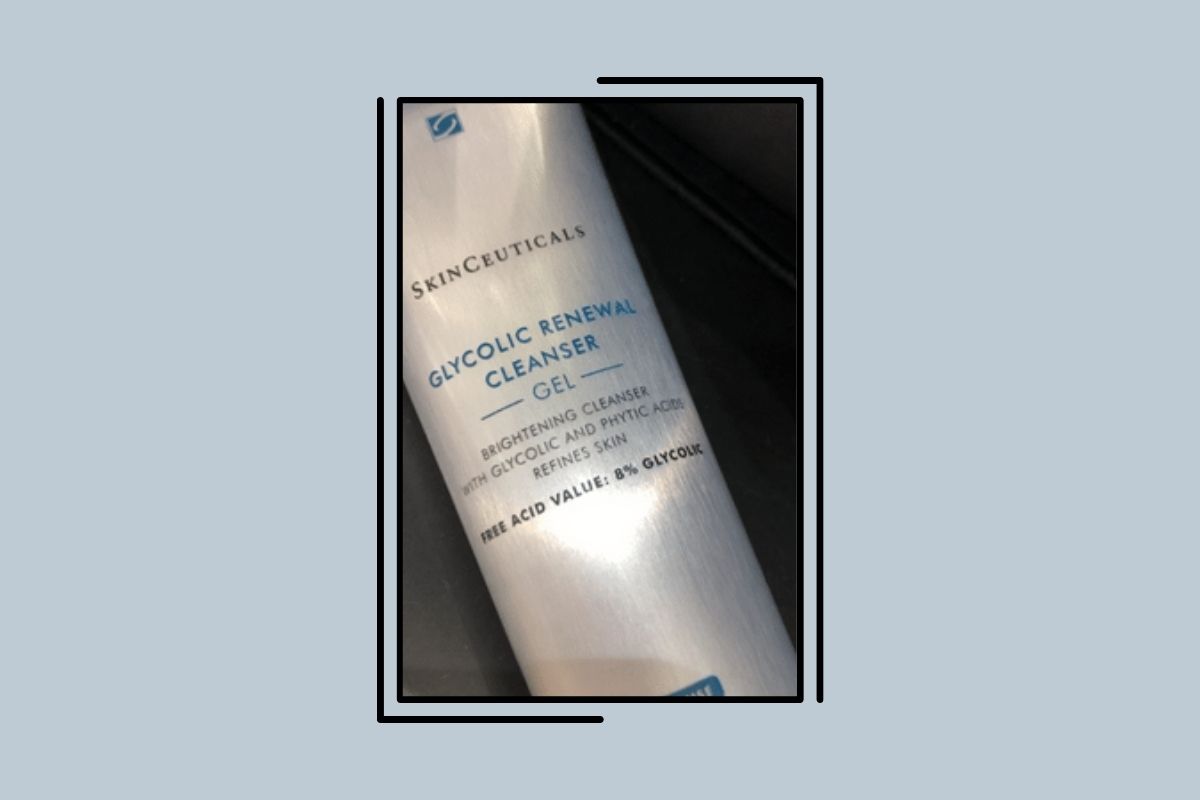At this point, hyaluronic acid (HA) is everywhere! From cleansers to face mists, hyaluronic acid is formulated into every possible product and is no longer exclusive to face serums. Despite this, I know some of you still haven’t tried it and don’t think it’s worth the hype.
Personally, it’s been a staple in my skincare routine, and I’m a huge fan. So I’m here to change your mind. Keep reading to learn about how hyaluronic acid works, how it benefits your skin, and how to properly use it.
What is Hyaluronic Acid?
Hyaluronic acid is one of the sugar molecules, which are collectively called glycosaminoglycans (GAGs), found in the human body [1]. It’s your body’s own lubricant and is more present in the skin than anywhere else [2].
Topical hyaluronic acid is a humectant and is used in skincare products to hydrate the skin [3]. It attracts and binds water to the skin, resulting in plumper skin.
Hyaluronic acid is one of the most hydrating skincare ingredients, and that’s why it’s very commonly formulated into almost all skincare products, especially face serums.
Benefits of Hyaluronic Acid for Skin
- Hyaluronic acid hydrates the skin. This helps your skin in two ways. It provides water to the skin and eliminates dryness and dehydration.
- Hyaluronic acid has an instant plumping effect on the skin, and this temporarily reduces the visibility of wrinkles and fine lines as well as dehydration lines.
- Hyaluronic acid is something our body produces less of as we age. So in topical formulations, hyaluronic acid makes the skin feel more elastic and look more youthful.
- It’s an incredibly gentle and lightweight ingredient. So, hyaluronic acid is commonly used together with active ingredients to mitigate potential irritation from said ingredients.
Types of Hyaluronic Acid
You’ve probably seen a bunch of fancy variations of HA on ingredient lists. Here’s a quick guide:
- Sodium Hyaluronate: The salt form of HA, a smaller molecule, has better penetration.
- Hydrolyzed Hyaluronic Acid: Broken down into smaller pieces so it can go deeper.
- High Molecular Weight HA: Sits on top of your skin, locks in surface hydration.
- Low Molecular Weight HA: Goes deeper into the skin, offers more lasting hydration.
The best products use a combo of high and low molecular weights for hydration that hits both the surface and the deeper layers of your skin.
Who Should Use Hyaluronic Acid?
Short answer: pretty much everyone. Long answer: hyaluronic acid is safe and beneficial for nearly all skin types. Whether your skin is dry, oily, combination, sensitive, or acne-prone, you can benefit from the hydration boost HA provides.
It’s a thirst-quencher for dry skin. It hydrates oily skin without adding oil or heaviness. And for acne-prone skin, it simply balances moisture, which can actually help reduce breakouts from dehydration.
If you have sensitive skin, it’s just gentle, non-irritating, and calming. If you have aging skin, it’s great for plumping skin, smoothing fine lines, and improving elasticity.
Does Hyaluronic Acid Dehydrate or Dry Out Skin?
The plot twist.
Yes, hyaluronic acid can actually dehydrate your skin if you’re using it wrong. Here’s the deal. HA is a humectant, which means it pulls water from wherever it can find it.
Ideally, that’s the humidity in the air. But if the air is dry, it can start pulling water from the deeper layers of your skin to the surface, and then that water just evaporates into the dry air.
So instead of hydrating you, it can dry you out. The solution? Always follow your HA product with an occlusive, like a good moisturizer or facial oil, to lock that water in and stop it from ghosting your skin.
How Do You Properly Use Hyaluronic Acid in Skincare?
- Step 1: Apply it on clean, damp skin. Not soaking wet, not dry, just lightly misted or freshly cleansed.
- Step 2: Follow with a moisturizer while your skin is still damp. You need something to seal it all in.
- Step 3: If your skin feels tight or sticky afterward, you might be using too much or layering with too many other humectants.
On a side note, HA serums are usually more concentrated than creams or cleansers, so they’re more likely to cause that tight, dry feeling if you skip the moisturizer.
Does Hyaluronic Acid Cause Pilling?
Hyaluronic acid, when you use it in multiple products in the same routine, can cause skincare pilling. It’s because there’s only so much you can put on the skin until the products start to pile up. To avoid that, use only a small amount.
And avoid layering too many similar formulations on top of each other. If you experience pilling, avoid layering a hyaluronic acid serum together with a humectant moisturizer or a heavily silicone-based moisturizer.
Does Hyaluronic Acid Cause Acne?
Hyaluronic acid does not cause acne. It’s one of the gentlest ingredients all skin types can comfortably use. However, other ingredients in your product may cause acne.
A typical hyaluronic acid serum is water-based, which is unlikely to clog pores or cause breakouts. However, if you’re not using HA the correct way and causing water loss, the resulting dehydration can easily cause acne.
After all, dehydrated skin is a common cause of breakouts. Another reason may be that HA serums sometimes contain vitamin C, which can be irritating for certain skin types and lead to acne.
Does Hyaluronic Acid Brighten Skin?
No. Hyaluronic acid has an instant plumping effect on the skin. Because of hydration, your skin looks more vibrant, fresh, and overall more radiant.
This might make you think that hyaluronic acid brightens your skin, but it does not. Hyaluronic acid has no effect on your skin tone.
Does Hyaluronic Acid Clog Pores?
Hyaluronic acid itself is not comedogenic, so it does not clog your pores. But you need to pay attention to the products you’re using. Look for the non-comedogenic or oil-free label on your HA products to keep your pores clean.
Can You Use Hyaluronic Acid With Other Ingredients?
Hyaluronic acid is a very gentle skincare ingredient and is compatible with a lot of active ingredients. Some of the skincare ingredients to mix with hyaluronic acid are:
- Retinol: Helps buffer the dryness.
- Vitamin C: Adds hydration to a brightening routine.
- Exfoliating acids (AHAs/BHAs): Calms and hydrates after all that exfoliating action.
- Niacinamide: A hydration + barrier support power couple.
- Peptides, ceramides, panthenol: All the soothing, all the hydration.
Can You Use Hyaluronic Acid Every Day?
Yes, and you probably should. Hyaluronic acid is gentle enough for daily use, and even twice a day in most cases. Morning and night applications can help maintain consistent hydration levels, especially if you live in a dry climate or spend time in air-conditioned or heated environments.
That said, if you’re using other actives like retinol, acids, or vitamin C, HA can play a supportive role, helping buffer potential irritation and maintain the skin barrier.
How Should You Choose Hyaluronic Acid Products?
Not all HA products are created equal. Here’s how to spot a good one.
Look for sodium hyaluronate or hydrolyzed HA high up on the ingredients list. Even better if the product contains multiple molecular weights of HA.
Additionally, look for water-based serums if you want something lightweight. Go for creams or lotions with HA if you have dry or mature skin and want more cushion. Always look for “non-comedogenic” or “oil-free” if you’re acne-prone.
So this is how HA works and how to use it. Hyaluronic acid isn’t new, but it’s still one of the most dependable, low-drama, high-impact skincare ingredients out there. When used right, it makes your skin look hydrated, plump, and glowy. So yes, it is worth the hype—but only if you use it properly.
If you’re on the lookout for a hyaluronic acid product, take a look at our round-up of the best drugstore hyaluronic acid serums and the best hyaluronic acid moisturizers.
Sources:
- Papakonstantinou, E., Roth, M., & Karakiulakis, G. (2012). Hyaluronic acid: A key molecule in skin aging. Dermato-endocrinology, 4(3), 253–258. https://doi.org/10.4161/derm.21923 ↩︎
- Gupta, R. C., Lall, R., Srivastava, A., & Sinha, A. (2019). Hyaluronic Acid: Molecular Mechanisms and Therapeutic Trajectory. Frontiers in veterinary science, 6, 192. https://doi.org/10.3389/fvets.2019.00192 ↩︎
- Purnamawati, S., Indrastuti, N., Danarti, R., & Saefudin, T. (2017). The Role of Moisturizers in Addressing Various Kinds of Dermatitis: A Review. Clinical Medicine & Research, 15(3-4), 75–87. https://doi.org/10.3121/cmr.2017.1363 ↩︎




